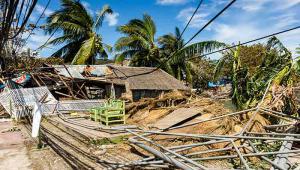By Paul Nettleton | 4 July 2013
A ‘missing middle’ of people in fast-growing, middle-income countries in Asia and the Pacific are being failed by social protection systems, a study by the Asian Development Bank says.
Social Protection Index: Assessing Results for Asia and the Pacific analysed social insurance, social assistance and labour market support in 35 countries, using data from 2009. After many years of high growth, it found, the region is in an excellent position to invest in better social protection.
But it found that many people facing difficulties such as losing their job, suffering illness or falling victim to natural disaster were not helped.
Bart Édes, director in the bank’s regional and sustainable development department, said: ‘There are many vulnerable groups, including women and informal sector workers, who can’t access unemployment, health or other social insurance but are also not poor enough to be eligible for social assistance such as cash transfers.
'Government social protection programs need to be expanded to cover this unprotected “missing middle,” who are at risk of falling into poverty in the case of an economic, environmental, or health shock of some kind.'
Japan, South Korea, Mongolia and Uzbekistan are among the few countries with Social Protection Indexes higher than 0.200, meaning they already invest 8% of gross domestic product on welfare. Spending in most middle-income countries, including Armenia, Fiji, India, Indonesia, Pakistan, the Philippines and Samoa, remains below 3% of GDP.
Men and the ‘non-poor’ benefit disproportionately because forms of social insurance dominate government spending. Poor and disadvantaged people rely on fragmented social assistance programmes, the report said.
It argued that broadening the coverage of social insurance and increasing the average benefits of social assistance should be priorities. Spending that corresponds to 20% of poverty-line expenditure or 5% of GDP per capita would be a reasonable strategic target.
With youth unemployment rising, critical skills gaps and the exclusion of women from formal labour markets, relatively little aws being spent on labour market programmes such as cash-for-work and skills development.
Expanded protection could be paid for by broadening the tax base while improving both tax collection and management of public spending. Governments should also encourage private firms to contribute more to social insurance programmes.
There should be an accelerated reform of pensions given the region’s huge informal sector and rapidly ageing population. The study also argued the case for micro-insurance schemes to cushion the impact of changing weather patterns and natural disasters.
The index was prepared by ADB with the Organisation for Economic Co-operation and Development, the OECD Korea Policy Centre and the International Labour Organisation.













